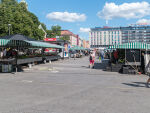
How would higher defence spending affect Finland’s economic growth?
Along with many other European countries, Finland intends to increase its defence spending. This would increase Finland’s public expenditure and spur economic growth. The larger the share of defence procurements purchased from within the euro area, the more favourable the impact.











